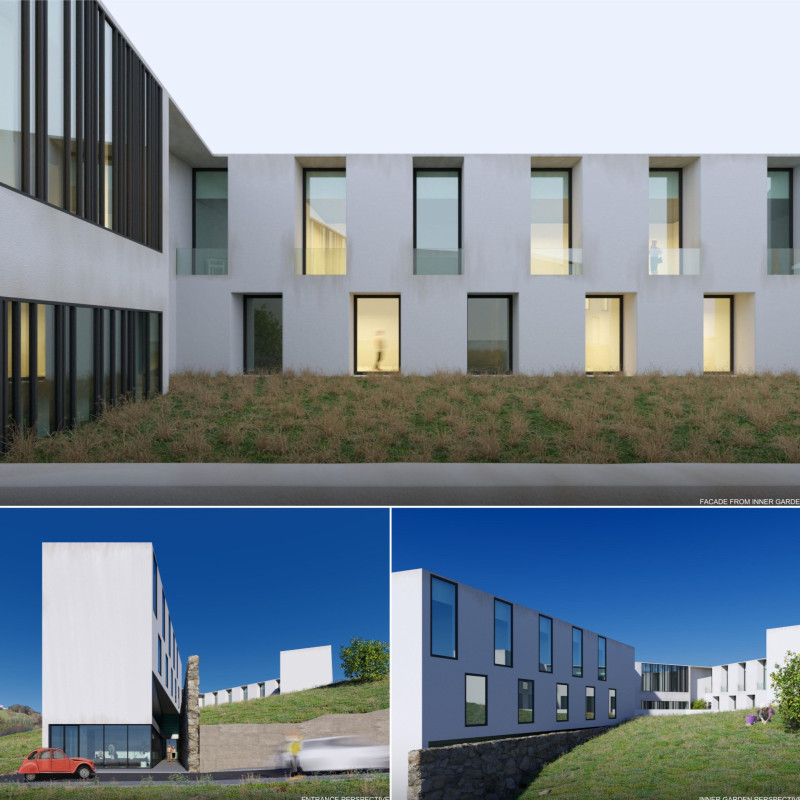5 key facts about this project
At first glance, the exterior of the building showcases a dynamic interplay of shapes and materials, which offers a visual narrative of its purpose. The façade is articulated with a combination of materials that accentuate its architectural presence. Utilizing high-performance glass, natural stone, and sustainably sourced timber, the project establishes a dialogue with the surrounding landscape and urban fabric. These materials were selected not only for their durability and aesthetic qualities but also for their ability to connect the indoor and outdoor environments, fostering a seamless transition between spaces.
The building's design embodies a commitment to sustainability and energy efficiency. Passive design strategies have been thoughtfully integrated, maximizing natural light and minimizing energy consumption. Large windows and strategically placed overhangs ensure that the interior spaces receive ample daylight while providing shade during warmer months. This consideration not only enhances the occupants’ experience but also reduces the reliance on artificial lighting and climate control systems.
The interior layout is organized to enhance flow and interaction among users. Open floor plans create an inviting atmosphere, while flexible spaces support a variety of uses, adapting to the evolving demands of its inhabitants. Thoughtfully designed circulation routes guide occupants through the space, facilitating connections between different areas without feeling congested. The inclusion of communal spaces encourages social interaction, fostering a sense of community among users.
Architectural details contribute significantly to the overall character of the project. Custom fixtures, such as lighting solutions and built-in furniture, reflect a commitment to craftsmanship and attention to detail. The use of texture plays an important role, with tactile materials that engage the senses, encouraging users to interact with the environment on multiple levels.
Furthermore, unique design approaches manifest in the integration of green spaces within the project. Roof gardens and terraces not only provide recreational areas but also serve vital ecological functions, such as stormwater management and biodiversity support. These spaces are designed to be accessible and inviting, blending ecological responsibility with user engagement, ultimately fostering a deeper connection to nature.
This project stands out in its context by addressing contemporary architectural challenges through a comprehensive approach. Its ability to harmonize with the environment while serving diverse functional needs reflects a thoughtful response to modern living demands. The intentional selection of materials, innovative design techniques, and consideration for sustainability mark this project as a notable contribution to the architectural landscape.
For those interested in delving deeper into the specifics of this project, exploring the architectural plans, sections, and additional design aspects reveals the intricate thought process behind every decision made during its conception. This exploration provides a fuller understanding of how the design implements architectural ideas that resonate with both users and the environment. Engaging with the presentation of this project will offer valuable insights into contemporary architectural practices and the potential for thoughtful design in urban settings.


























